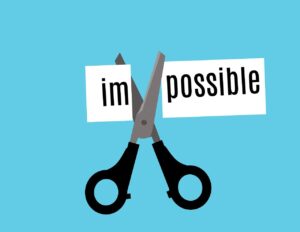
Image Source: pexels.com
Budgeting can feel overwhelming, especially when you’re juggling bills, savings goals, and the occasional splurge. If you’ve ever searched for a simple way to manage your money, you’ve probably come across the 50/30/20 rule. This popular budgeting method promises to make financial planning straightforward, but is it really the holy grail of budgeting? Understanding how the 50/30/20 rule works—and whether it fits your lifestyle—can help you take control of your finances without feeling restricted. Let’s break down what this rule is, why it’s so popular, and whether it’s the right fit for you.
1. What Is the 50/30/20 Rule?
The 50/30/20 rule is a budgeting framework that divides your after-tax income into three main categories: 50% for needs, 30% for wants, and 20% for savings or debt repayment. The idea is to simplify budgeting by giving you clear, easy-to-follow guidelines. Needs include essentials like rent, groceries, utilities, and insurance. Wants to cover things like dining out, entertainment, and vacations. The final 20% goes toward building savings, investing, or paying off debt. This method is popular because it’s easy to remember and doesn’t require tracking every single expense. For many, it’s a breath of fresh air compared to more complicated budgeting systems.
2. Why Has the 50/30/20 Rule Become So Popular?
The 50/30/20 rule has gained traction because it’s accessible and flexible. Unlike strict budgets that require you to account for every dollar, this rule gives you room to breathe. It’s especially appealing for beginners or anyone who feels overwhelmed by traditional budgeting. The simplicity of the 50/30/20 rule means you can quickly assess your spending and make adjustments without getting bogged down in details. Additionally, it’s adaptable to various income levels and life stages, making it a go-to choice for many individuals seeking to get their finances in order.
3. How to Apply the 50/30/20 Rule to Your Finances
Applying the 50/30/20 rule starts with calculating your after-tax income. Once you know your monthly take-home pay, multiply it by 0.5 to determine your needs budget, by 0.3 for wants, and by 0.2 for savings or debt repayment. For example, if you bring home $4,000 a month, you’d allocate $2,000 to needs,$1,200 to wants, and $800 to savings or debt. Review your current spending to see where your money is going. If you’re spending more than 50% on needs, look for ways to cut back or increase your income. If your wants are eating into your savings, consider what you can trim. The 50/30/20 rule isn’t about perfection—it’s about creating a sustainable plan that helps you reach your goals.
4. The Pros: Why the 50/30/20 Rule Works for Many
One of the most significant advantages of the 50/30/20 rule is its simplicity. You don’t need fancy spreadsheets or budgeting apps to get started. The clear categories make it easy to identify problem areas and make adjustments quickly. This rule also encourages a healthy balance between enjoying life and planning for the future. By setting aside 20% for savings or debt, you’re building a financial safety net without feeling deprived. The 50/30/20 rule can also help couples or families get on the same page about their finances, as the guidelines are straightforward to discuss and understand. For many, this method is a practical way to build better money habits.
5. The Cons: Where the 50/30/20 Rule Falls Short
While the 50/30/20 rule is a great starting point, it’s not perfect for everyone. If you live in a high-cost area, your needs may consume more than 50% of your income, making the rule difficult to follow. Individuals with substantial debt or ambitious savings goals may find that 20% isn’t sufficient. The rule also doesn’t account for irregular expenses, like car repairs or medical bills, which can throw off your budget. Some critics argue that the 50/30/20 rule oversimplifies personal finance and doesn’t encourage detailed tracking, which can be important for those with complex financial situations.
6. Customizing the 50/30/20 Rule for Your Life
The beauty of the 50/30/20 rule is that it’s a guideline, not a strict law. If your needs are higher, you might adjust to a 60/20/20 split, or if you want to save aggressively, you could try 50/20/30. The key is to use the 50/30/20 rule as a starting point and tweak it to fit your unique situation. Track your spending for a month or two to see where your money actually goes, then adjust your percentages as needed. Remember, the goal is to create a budget that works for you, not to fit your life into a rigid formula. Flexibility is essential for long-term success.
Rethinking the “Holy Grail” of Budgeting
The 50/30/20 rule is a powerful tool, but it’s not a one-size-fits-all solution. It offers a simple, flexible framework that can help you get started with budgeting and build better financial habits. However, your financial journey is personal, and the best budget is the one you can stick to. Use the 50/30/20 rule as a foundation, but don’t be afraid to adapt it as your needs and goals change. Ultimately, the real “holy grail” of budgeting is finding a system that helps you live well today while preparing for tomorrow.
What’s your experience with the 50/30/20 rule? Do you follow it, or have you found another budgeting method that works better for you? Share your thoughts in the comments!
Read More
Vacation Without Breaking the Bank
Stop Reading About Last Year’s Top Ten Mutual Funds

Travis Campbell is a digital marketer/developer with over 10 years of experience and a writer for over 6 years. He holds a degree in E-commerce and likes to share life advice he’s learned over the years. Travis loves spending time on the golf course or at the gym when he’s not working.







